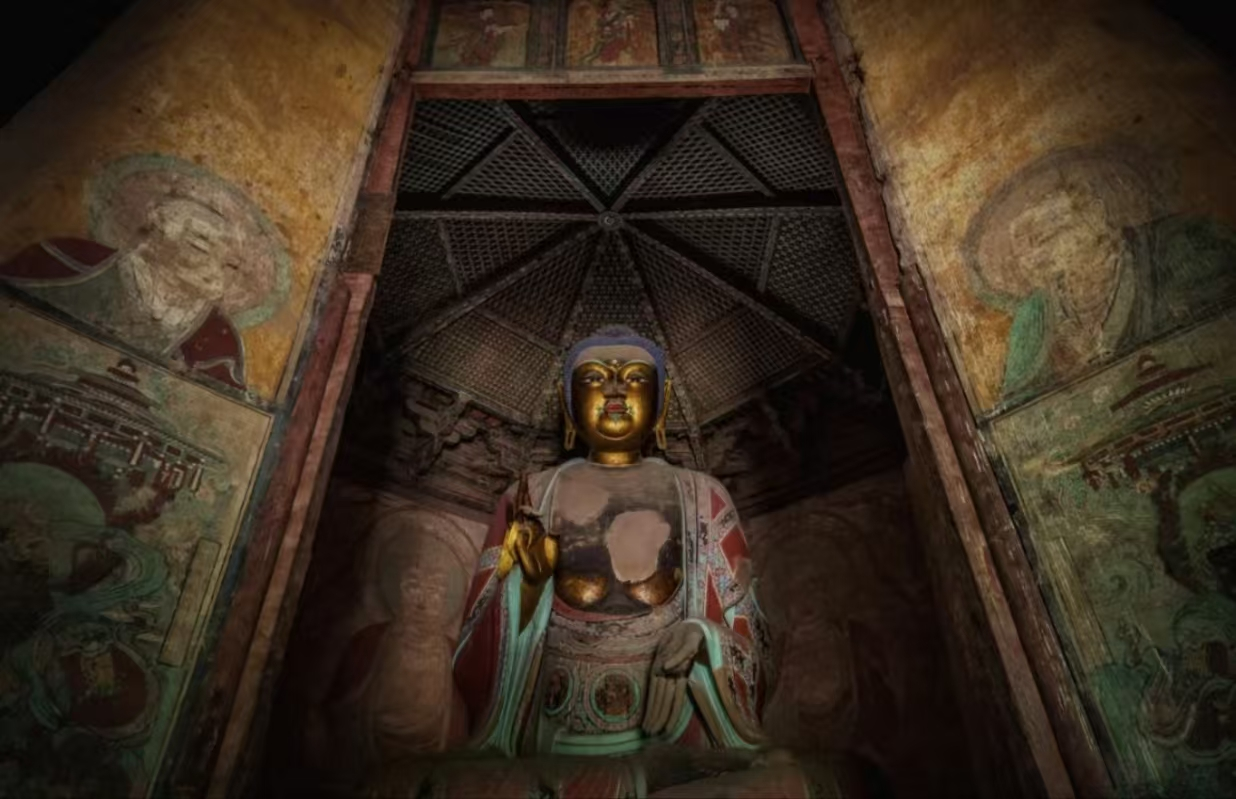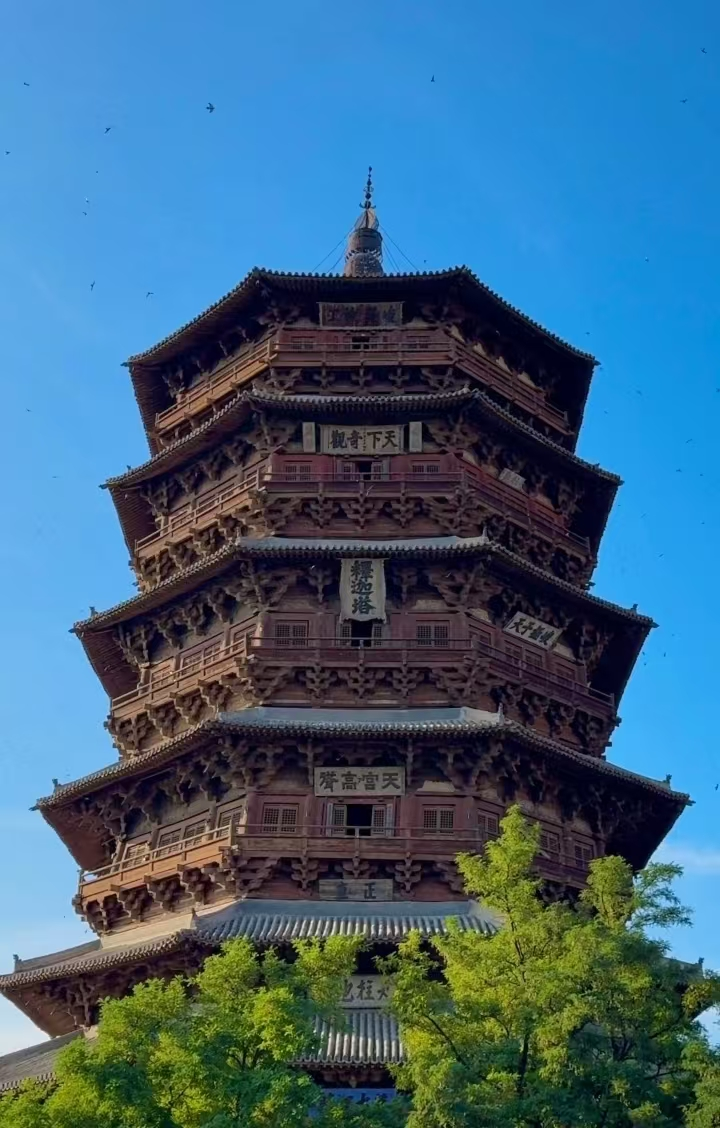Nestled within the Fogong Temple in the northwest of Yingxian County, Shuozhou City, Shanxi Province, stands a wooden pagoda that has been gently preserved by time, which is not merely a building but also a testament to history. Yingxian Wooden Pagoda, also known as Sakyamuni Pagoda of Fogong Temple, is a marvel of wooden architecture first built in the second year of the Qingning reign of the Liao Dynasty (1056 AD). It was ordered by Emperor Xingzong of Liao, Yelü Zongzhen, and after nearly three decades of meticulous craftsmanship, it finally rose to prominence. As the greatest and oldest existing pure wooden structure in the world, it stands at a height of 67.31 meters. With its octagonal design and an exterior featuring five levels and six eaves, it conceals a subtle secret of having nine levels—five explicit and four implicit. Like a wise sage, it appears simple on the outside but is profound and complex within.

Each level of the pagoda skillfully employs the unique component of ancient Chinese architecture known as dougong (bracket sets). There are 59 different types of dougong across the entire pagoda, and hundreds of them, resembling blooming lotuses, adorn the pagoda. Consequently, it is acclaimed as a "Museum of Dougong." The dougong of the Yingxian Wooden Pagoda come in various types and shapes. Some resemble blossoming flowers, with layers of colorful and vibrant petals. Others look like birds in flight, light and nimble, full of vitality. These dougong are not only aesthetically pleasing but also crucial for the structural stability of the pagoda. Such a diverse array of dougong is extremely rare in China.

What is even more remarkable is that the entire wooden pagoda was constructed without a single iron nail, relying entirely on the interlocking of wooden components through mortise-and- tenon joints. The dougong and beams are embedded and interwoven to form a stable and somewhat elastic integral structure. Countless wooden components are joined through the ingenious use of mortise-and-tenon joints, which forms a stable and robust whole. The structure can withstand significant pressure and weight and also has excellent seismic resistance. After enduring multiple earthquakes and wars, the pagoda remains unscathed, showcasing the exceptional skills of ancient craftsmen. Thus, the Yingxian Wooden Pagoda is not just a building but also a work of art.

First Review by Zhan Xia
Second Review by Zhang Jian
Final Approval by Su Xiaoping


